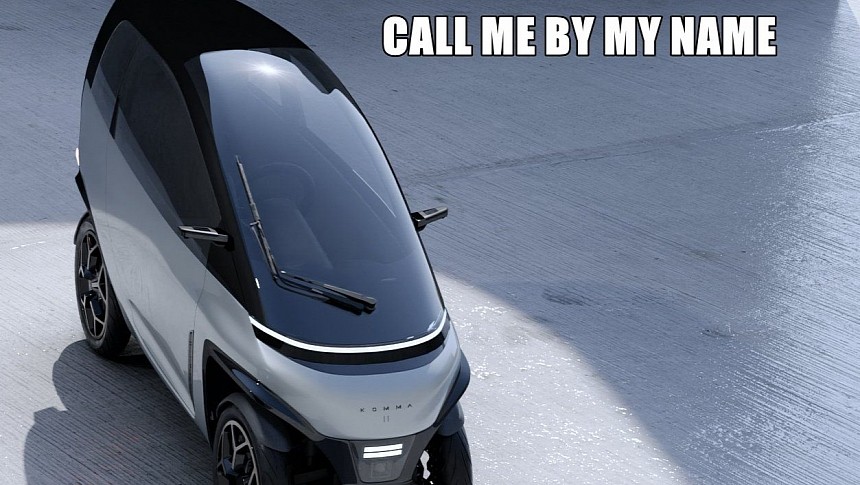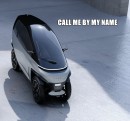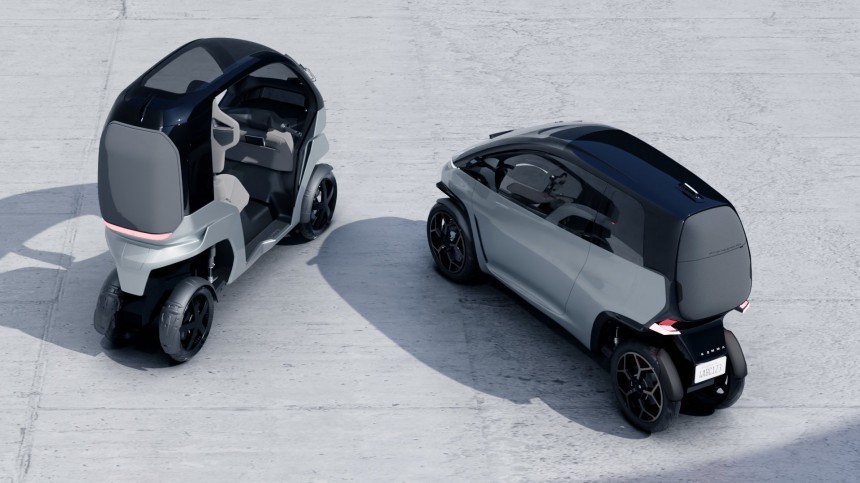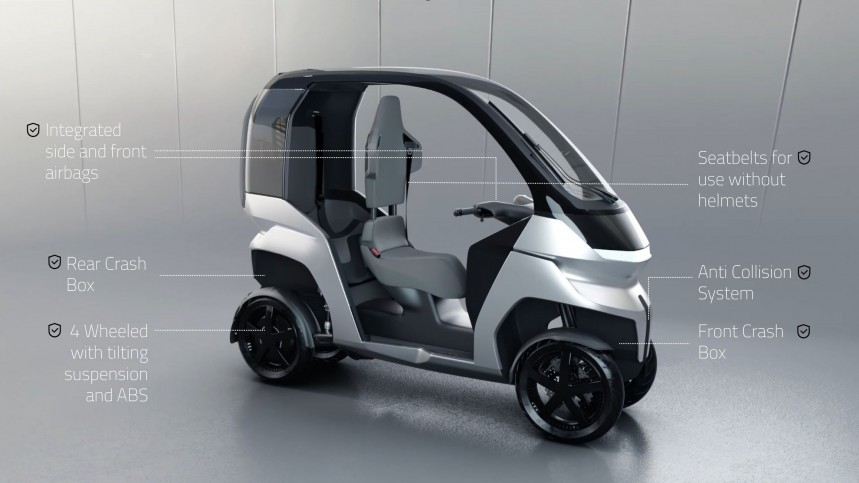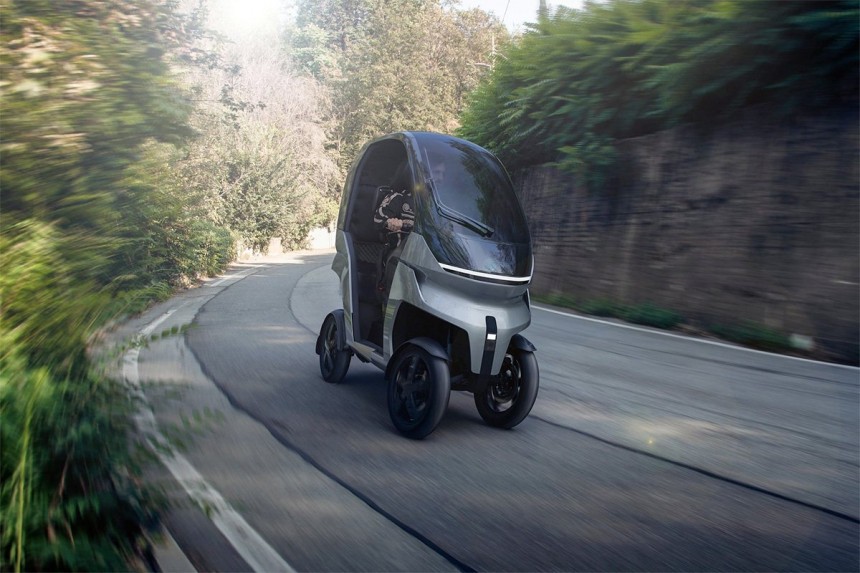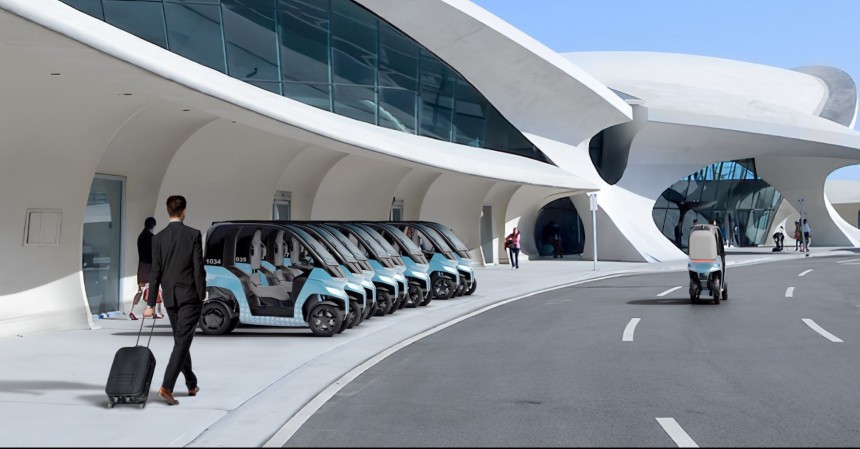A rose by any other name would smell as sweet, as The Bard so beautifully put it, but the sweet smell of the absence of exhaust fumes can go by different names. The Komma EV is making an argument against being called a microcar.
The future of our planet largely depends on our cutting down on our reliance on fossil fuels, and this is where electric vehicles would swoop in to save the day. That's the most idealistic and simplistic take on the massive upgrade the auto industry is in for, and so far, reality hasn't lived up to expectations. EV adoption is slow, hindered by prohibitive pricing and the stunted development of assorted technology that would make EVs better alternatives to ICE (internal combustion engine) cars.
So, what if maybe our entire approach is wrong?
That's certainly the case Swiss startup Granstudio is trying to argue in the presentation of their Komma EV, which they hope to bring into production no later than 2025. The timeline alone is a very bold one, so we might as well give them some of our attention as they argue for the Komma, an electric vehicle they say shouldn't be described as a microcar even though it seems to check all the boxes of one.
The Komma EV is gunning for an L5e-A homologation, which would qualify it as a tricycle in EU states. It's technically an electric quad, aiming to bridge two worlds to deliver all the advantages of both and none of the downsides: it's an EV nimble and stable as a motorcycle but with the safety elements of a passenger car, including the ability to carry an extra passenger and some luggage, but it has none of the disadvantages of a car.
Granstudio is adamant about avoiding the association with a microcar because all previous attempts at making them happen on a large scale have failed, more or less spectacularly. If it's not the design and single functionality of the vehicle, it's the stability and safety of a microcar that's working against it.
And that's precisely why we need to think outside of the box, Granstudio says. The Komma is like a microcar in design, with its tandem seats and little storage compartment in the rear, but it's more like a car in the way it's equipped with safety features and weather protection. Perhaps more impressively, it sits like a motorcycle on the road, tilting to the sides to keep its grip on the road thanks to a patented four-wheel electronic tilting system (e-TS).
Powered by in-wheel motors, the Komma would rely on a modular battery pack, offering as much as 200 km (124 miles) of range per charge, depending on which option you choose. Granstudio mentions options like a single 7.5kWh module or a twin 15kWh module and a possible top speed of 130 kph (81 mph), which is more than decent to zap around the city with ease and efficiency.
The architecture would be modular as well, offering the possibility to adjust pricing to individual budgets and needs. The all-in version would be much like a passenger car, except it would be three times more energy efficient than an EV car, would use 66% less energy compared to a car, have 70% less of an ecological footprint, and 70% less of the operational and fuel costs. Oh, and it would require no helmet because of the integrated standard safety features.
These include ABS, airbags, seatbelts, and anti-collision control, and would bring the Komma one step over other electric vehicles like bicycles and microcars and closer to standard EV passenger cars. The cockpit would also be akin to what you can find in a car but with lots of emphasis on minimalism and digitalization.
"With Komma, you're not just driving," Granstudio says, "you're experiencing the future of high-performance transportation that's safe, eco-friendly, electrifying, and unforgettable."
Sadly, there's no driving yet. Neither is there any experiencing of anything even remotely close to what's promised, and that's mostly because the Komma EV is still in its early stages.
Despite the bold 2025 timeline and the brief glimpse at a prototype in the promotional video at the bottom of the page, details remain sparse. Granstudio makes several very enticing promises ranging from a decent range (heh) to that top speed and an overall decreased carbon footprint, but it still has to walk the walk after talking the talk.
For the time being, the Komma EV is taking note of interested potential buyers and investors who must sign up for updates. If we've learned anything of promising startups, it's that, sometimes, the road to hell really is paved with good intentions – just like the road to mass production is paved with incredible promises of a greener, safer, and happier future that have trouble living up to the hype.
So, what if maybe our entire approach is wrong?
That's certainly the case Swiss startup Granstudio is trying to argue in the presentation of their Komma EV, which they hope to bring into production no later than 2025. The timeline alone is a very bold one, so we might as well give them some of our attention as they argue for the Komma, an electric vehicle they say shouldn't be described as a microcar even though it seems to check all the boxes of one.
Granstudio is adamant about avoiding the association with a microcar because all previous attempts at making them happen on a large scale have failed, more or less spectacularly. If it's not the design and single functionality of the vehicle, it's the stability and safety of a microcar that's working against it.
And that's precisely why we need to think outside of the box, Granstudio says. The Komma is like a microcar in design, with its tandem seats and little storage compartment in the rear, but it's more like a car in the way it's equipped with safety features and weather protection. Perhaps more impressively, it sits like a motorcycle on the road, tilting to the sides to keep its grip on the road thanks to a patented four-wheel electronic tilting system (e-TS).
The architecture would be modular as well, offering the possibility to adjust pricing to individual budgets and needs. The all-in version would be much like a passenger car, except it would be three times more energy efficient than an EV car, would use 66% less energy compared to a car, have 70% less of an ecological footprint, and 70% less of the operational and fuel costs. Oh, and it would require no helmet because of the integrated standard safety features.
These include ABS, airbags, seatbelts, and anti-collision control, and would bring the Komma one step over other electric vehicles like bicycles and microcars and closer to standard EV passenger cars. The cockpit would also be akin to what you can find in a car but with lots of emphasis on minimalism and digitalization.
Sadly, there's no driving yet. Neither is there any experiencing of anything even remotely close to what's promised, and that's mostly because the Komma EV is still in its early stages.
Despite the bold 2025 timeline and the brief glimpse at a prototype in the promotional video at the bottom of the page, details remain sparse. Granstudio makes several very enticing promises ranging from a decent range (heh) to that top speed and an overall decreased carbon footprint, but it still has to walk the walk after talking the talk.
